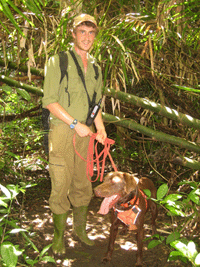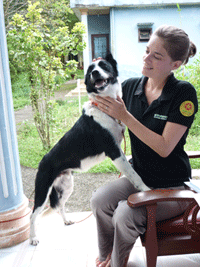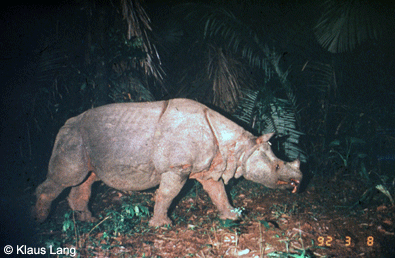The EDGE team is pleased to welcome its two newest Community members – Sarah Brook and Simon Mahood from WWF Vietnam.

Sarah and Simon are two months into a six month survey to determine the population status of the Javan rhino in Vietnam. Ranked 11th out of the 4,182 mammals currently assessed by EDGE, this unique and Critically Endangered species is a global priority for conservation attention.
Until recently I was under the illusion that while lesser known EDGE species, such as the Sagalla caecilian and Hispaniolan solenodon remain largely unnoticed by the rest of the world, an animal as large and charismatic as the Javan rhino, would feature prominently in the public consciousness.
A short survey of my non-zoologist friends soon revealed that I was wrong. While the plight of the two African rhinos is relatively well-known, fewer people seem to be aware that there are three distinct species in Asia, let alone be able to name them! In the unlikely event that you are one of these people, then you can learn all about the Javan rhino and its relatives the greater one-horned rhino and Sumatran rhino by following the links.
The Javan rhino is the rarest of the five living rhinoceros species, four of which occur within the EDGE Top 100 mammal list. It was once common throughout Indochina, but today comprises just two isolated populations: around 50 individuals in Ujung Kulon National Park in Java, Indonesia and an even smaller population – estimated to number between 2 and 10 rhinos – occupying part of Cat Tien National Park in southern Vietnam.
Sarah and Simon aim to comprehensively survey Cat Tien to determine the population status of Javan rhinos within the park. The dedicated duo contend daily with blood-sucking leeches, vicious stands of rattan (a spiny jungle palm) and two slightly over enthusiastic sniffer dogs (Pepper and Chevy) in their ongoing quest to obtain a freezer full of Javan rhino poo. In five month’s time they hope to have gathered fecal samples from every rhino in the park. Subsequent DNA and hormone analysis will hopefully enable them to figure out the exact number of rhinos in the park, along with their sex ratio and reproductive status. This information will help to guide park management so that the rhinos can be monitored and protected effectively into the future.
You can follow Sarah and Simon’s adventures on their blog, “Rhinomania” which is updated regularly with news from the survey.


